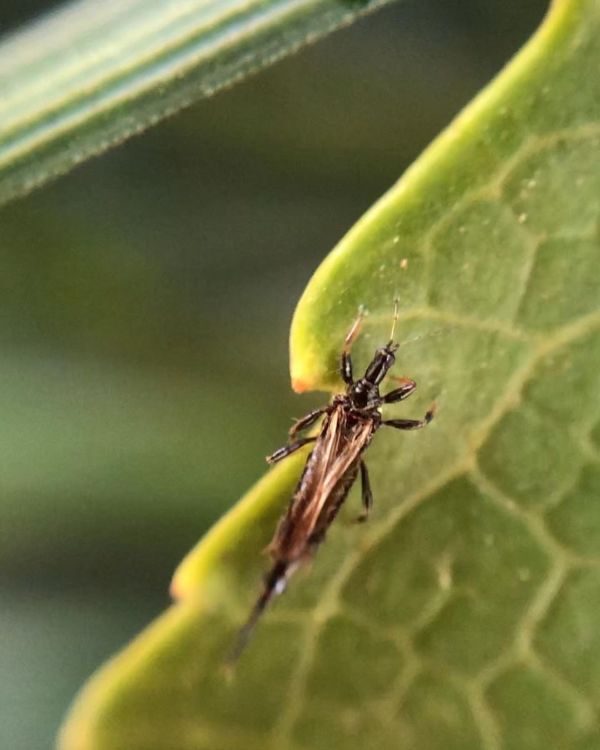Monstera deliciosa is a beloved indoor plant known for its lush green leaves and unique Swiss cheese-like holes. However, like any other plant, the monstera is vulnerable to pests and diseases, including thrips. These tiny insects can wreak havoc on your monstera, causing leaf damage and unsightly discoloration. In this comprehensive guide, we'll explore the causes of thrips infestations on monstera plants, as well as preventative measures and solutions to restore your plant's health and beauty.
1. Understanding the Causes of Thrips on Monstera Plants
Before we dive into preventative measures and solutions, it's important to understand the causes of thrips infestations on monstera plants. Thrips are small, slender insects that feed on plant sap, causing damage to leaves and spreading plant diseases. Here are some of the potential causes of thrips infestations on your monstera:

1.1 Environmental Factors: A Key Contributor
Environmental factors play a significant role in thrips infestations on monstera plants. Thrips thrive in warm, humid conditions, and a lack of ventilation can make the perfect breeding ground for these pests. Additionally, overwatering or poorly drained soil can lead to increased humidity levels and attract thrips to your monstera.
1.2 Contaminated Soil or Plant Material: The Hidden Threat
Another potential cause of monstera with thrips damage is contaminated soil or plant material. Thrips can be transported from other infested plants or soil, or they can hitchhike on new plants brought into your home. It's essential to carefully inspect any new plants or soil before introducing them to your monstera to prevent the spread of thrips.
2. Preventing Thrips on Monstera Plants: Proactive Measures
Prevention is always the best approach when it comes to plant health, and taking proactive measures can help you avoid thrips infestations on your monstera. By maintaining optimal growing conditions and monitoring your plant regularly, you can minimize the risk of thrips appearing in the first place.
2.1 Proper Watering Techniques: A Key to Success
Proper watering techniques are crucial for preventing thrips on your monstera. Overwatering can create a breeding ground for thrips and promote the growth of mold, which can attract these pests. Water your monstera only when the top inch of soil is dry, and avoid letting the plant sit in standing water.
2.2 Adequate Ventilation and Humidity: A Breath of Fresh Air
Maintaining appropriate levels of humidity and ensuring good air circulation can help prevent thrips infestations on your monstera. Place your plant in a well-ventilated area and consider using a humidifier or pebble tray to create the ideal environment for your plant.
2.3 Regular Monitoring and Maintenance: Staying Vigilant
Regularly inspecting your monstera plant for signs of thrips is critical for preventing these pests from causing extensive damage. Look for symptoms such as yellowing or distorted leaves, black spots, and silvery or bronze discoloration. By catching thrips early, you can prevent the spread of these pests to other plants in your home.
Read more: How to Get Rid of Thrips on Monstera: Effective Solutions
3. Solutions: Eradicating Thrips on Monstera Plants
If you've noticed signs of thrips on your monstera, it's important to take swift action to prevent further damage. Here are some targeted solutions to eradicate thrips on your monstera:

3.1 Chemical Pesticides: A Last Resort
Chemical pesticides can be effective for treating thrips infestations on monstera plants, but they should be a last resort. Choose pesticides specifically formulated for thrips and follow the label instructions carefully to ensure safe and effective treatment. Remember to wear protective clothing and use caution when applying chemical pesticides.
3.2 Natural Remedies: A Safer Alternative
Natural remedies can also be effective for treating thrips on your monstera plant. Neem oil, insecticidal soap, and horticultural oils are all natural options that can help control thrips infestations. Introducing beneficial insects like ladybugs and lacewings can also help keep thrips at bay.
3.3 Isolation and Quarantine: Containing the Infestation
If you've noticed signs of thrips on your monstera, it's important to isolate your plant and quarantine it from other plants in your home. This can help prevent the spread of thrips to other plants and reduce the risk of a widespread infestation.
Read more: How to Get Rid of Thrips on Monstera: Causes, Prevention, and Solutions
Conclusion: Keeping Your Monstera Healthy and Beautiful
Thrips infestations can be a serious issue for your monstera plant, causing unsightly damage and discoloration. By understanding the causes of thrips infestations and implementing preventative measures, you can keep your monstera healthy and thriving. If you do notice signs of thrips on your plant, taking swift and targeted action can help eradicate the infestation and restore your monstera's health and beauty. With proper care and attention, your monstera will continue to be a stunning addition to your indoor plant collection for years to come.